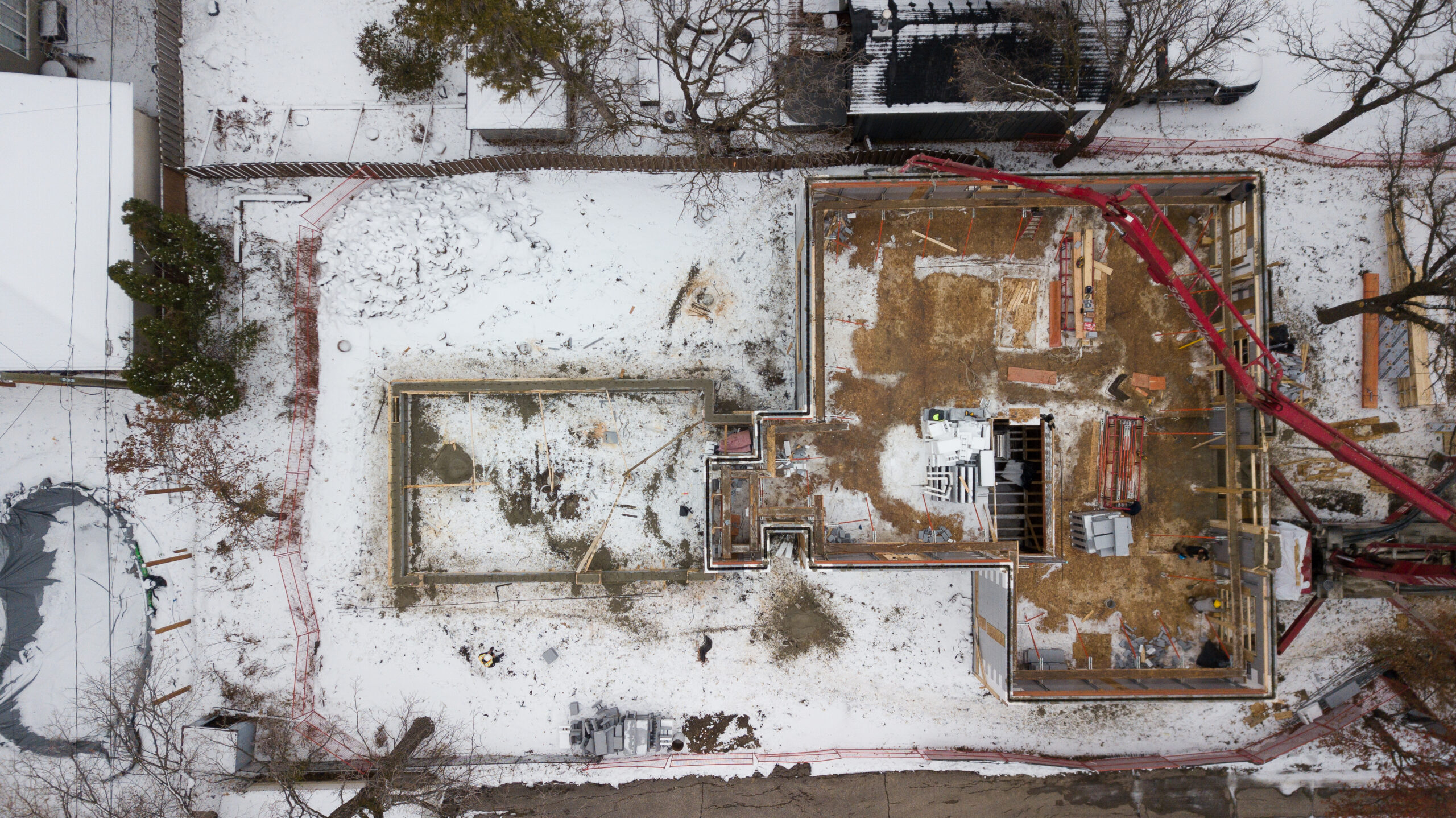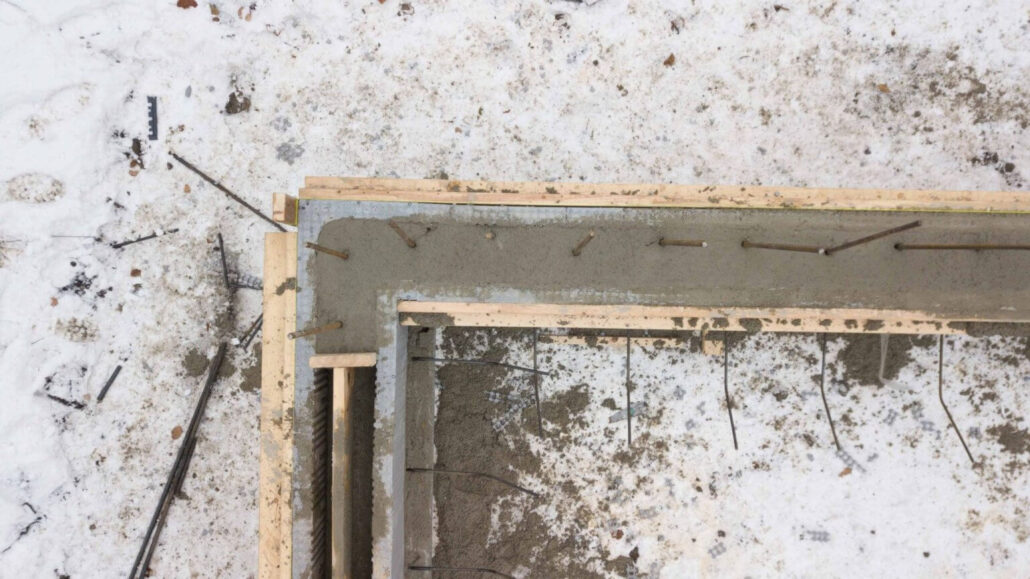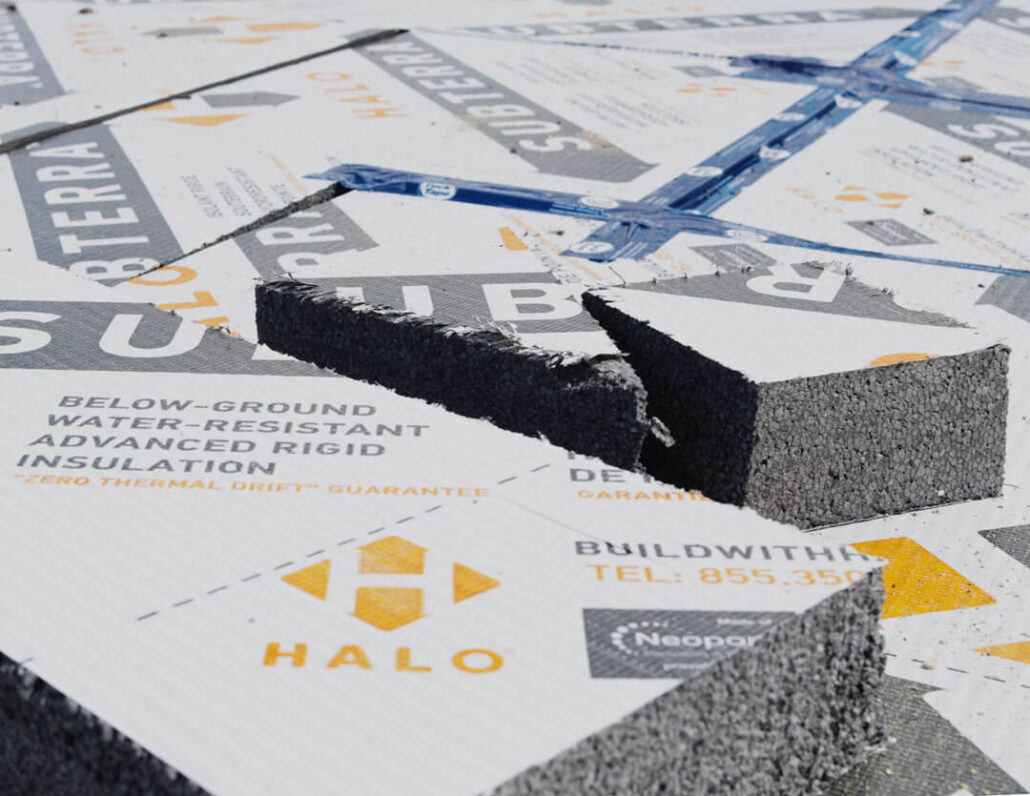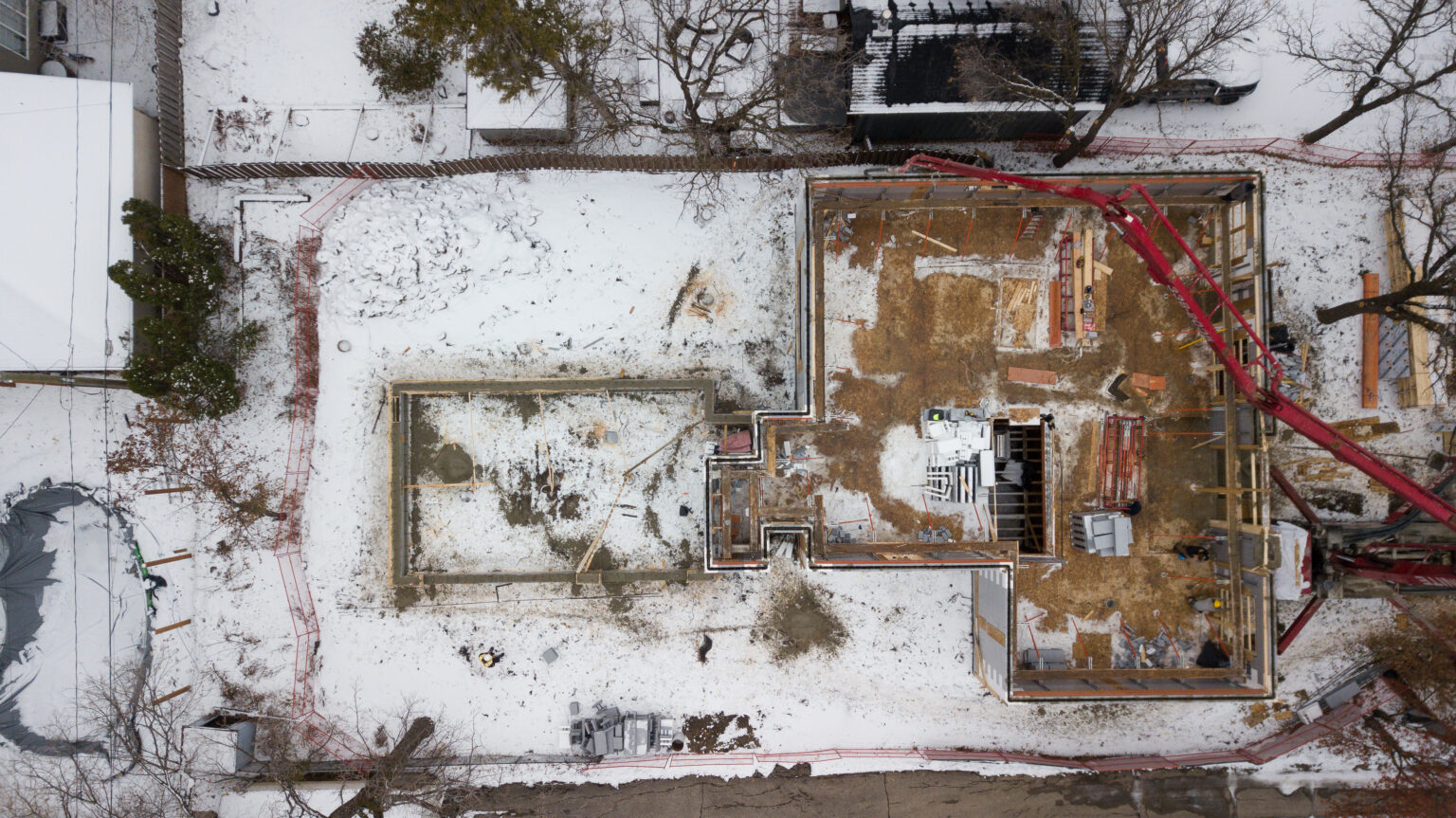
The key to successful concrete curing, especially in cold weather, is maintaining the right temperature. Standard practice requires maintaining a concrete mix at a minimum of 10°C (50°F) for at least 3 days or until it reaches 40% of its design strength. ICF walls naturally create an ideal curing environment by insulating the concrete and retaining heat from the hydration process.
However, the top of the ICF wall remains exposed and vulnerable to cold weather, which can affect the curing process. Therefore, the primary focus when pouring concrete into ICF walls in cold weather should be on insulating the top of the wall.

Effective Insulation Methods for ICF Walls in Cold Weather
- Thermal Blankets:
- Utilize high R-Value thermal blankets to cover the top of the wall, ensuring adequate insulation against the cold.
- Foam Board Insulation:
- Halo’s Subterra foam boards, with an R-Value of R-5 per inch, provide excellent thermal resistance to ensure proper curing at the wall’s top.

Avoiding Ineffective Materials:
- Straw, for instance, offers limited insulation compared to foam boards or thermal blankets and should be avoided.
Quick Discharge of Concrete
- In cold weather, it’s crucial to fill the ICF wall cavities rapidly to start the curing process immediately.
- Concrete should be discharged within 2 hours, as per CSA standards, but this time frame shortens in colder temperatures.
Requesting Concrete Mixtures to Accelerate Curing
- For faster curing, ask the plant to add non-chloride admixtures, compatible with the rebar in ICF walls.
- Avoid adding curing accelerants on-site; this should be managed by the ready-mix plant.
Conclusion: Simplifying Cold Weather Concrete Pour with ICFs
Pouring concrete in cold weather is made easier with ICFs, thanks to their insulating properties. To enhance the curing process in cold conditions, remember to:
- Insulate the tops of ICF walls with thermal blankets or rigid insulation like Halo’s Subterra.
- Pre-heat the concrete mix at the ready-mix plant.
- Discharge the concrete quickly.
- Use appropriate admixtures to accelerate curing.












